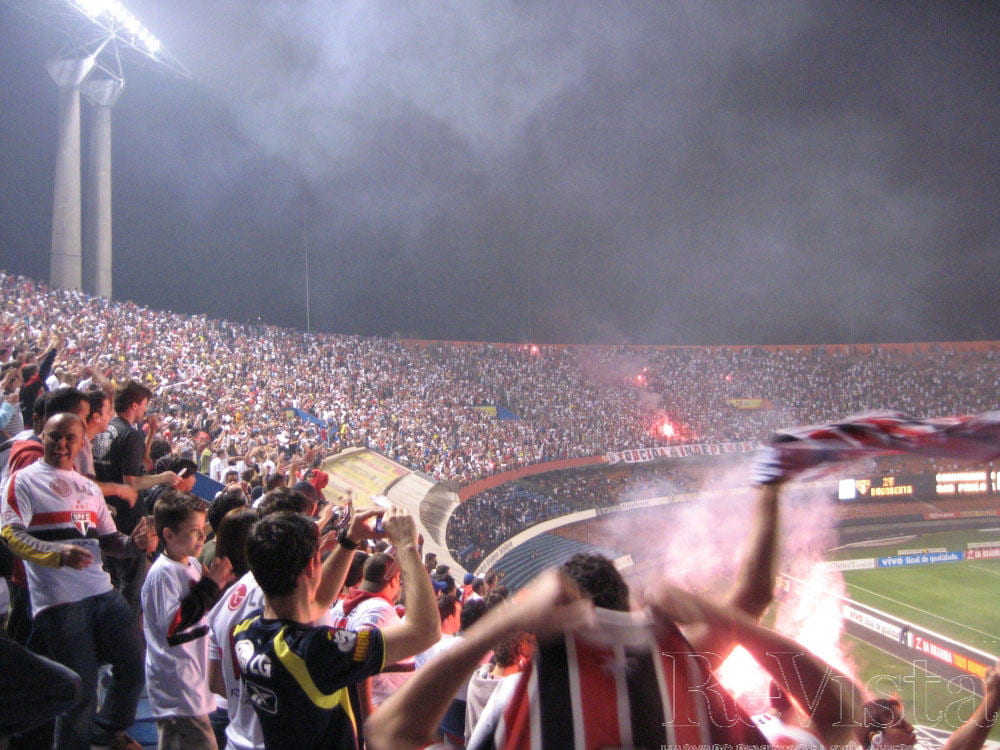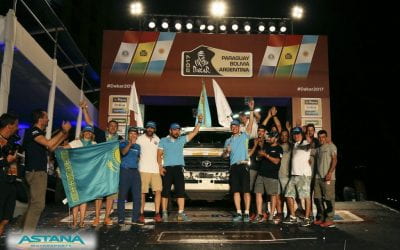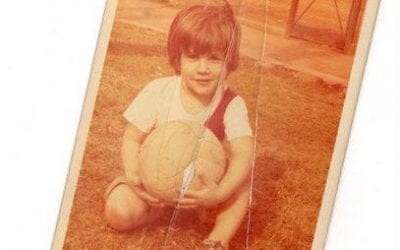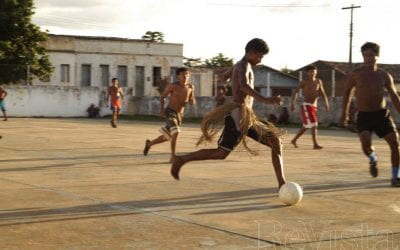The Ball and the Blackboard
Soccer in the Classroom
As an undergraduate, I had a Classics professor who sometimes spoke of the humanities’ task as the search for the strange in the familiar, and the familiar in the strange. The idea stuck with me, and in my own classes I have attempted to create an environment in which students re-evaluate their preconceived notions, and simultaneously establish connections to what may seem remote or exotic. Since most of my courses revolve around the cultural histories of cities, normally this is a rather safe exercise. How might a 19th-century urban dweller find our sartorial habits unusual? How might we draw parallels between Brasília’s development and that of more traditional capitals?
In fall 2010, however, this pedagogical effort became quite personal and tricky. I had developed a Freshman Seminar called Soccer and Latin America: History, Politics, and Popular Culture. It was now time to face fifteen bright and eager Princeton students, as well as my own obsessive relationship to the sport. While not out of place in Brazil (where I am from), my unrestrained passion of soccer would certainly reduce me to the stereotype of the fiery Latin American. All of a sudden I feared that my immigration status as a “non-resident alien” would actually be confirmed in the classroom.
In my many years studying and then working in North American universities, I had mostly retained an adolescent attitude to soccer. Comparisons to the experience of sports like baseball and football were readily dismissed. To be sure, I recognized the existence of rabid fans north of the Rio Grande, but someone from a country with a flag on the moon could never understand the extent to which past World Cup victories defined my sense of national identity as a child in the 1980s. A game could be tense, heart-wrenching or cathartic. It was seldom entertainment. My sense of national belonging, meanwhile, was easily surpassed by the role the soccer club Vasco da Gama played in early memories, family ties and friendships. Few things are less conceivable in Brazil than the idea of an inpidual switching allegiance from one team to another. “Of all the loves I have ever had, you are the oldest,” one of the chants sung at Vasco’s games begins. A cross-town rival’s anthem asserts how this first-love lasts “until death.”
I could never think of a stadium being renamed after a bank, of a team having an owner, or of a club treated as a “franchise” that could even move to a different city. Now I would have to lead a seminar with students who found all of these aberrations to be normal. At the same time, I had been living away from Brazil—and working as an academic—for long enough to recognize myself as an outlier when it came to soccer. My initial concern that others at Princeton would not find the topic serious enough was quickly proven unfounded. At the university, I only encountered support and encouragement. But what if my stadium instincts kicked in during seminar discussions, reverting the tweed-jacket intellectual back to the jersey-wearing aficionado?
Suffice it to say that at least the majority of the time, I was able to fake it. The students turned out to share my enthusiasm, and class discussions were productive and vibrant. Since the seminar had around thirty applicants, I could assemble a perse group that included first-year students from Singapore, Ireland, El Salvador, England and several corners of the United States. Some came to the course because of soccer, others had an interest in Latin America and no prior relationship to the sport. It was an effective combination, and as intended, the course provided a window into the study of the region’s political, social, and cultural histories since the early 20th century.
Between clips of Maradona and Garrincha in action, the seminar focused on topics not unlike those that might arise in more orthodox courses. Discussions involved a variety of issues like the relationship between intellectuals and popular culture, representations of national identity, and the dynamics of globalization. We investigated interplays between soccer and the state, discussing the sport’s use and co-optation by dictatorial regimes of the 1960s and 70s, as well as its role in different countries’ self-assertions on the world stage. We read narratives of prominent chroniclers who elevated soccer to “epic” status, projecting national teams as the embodiment of a collective identity. In the process, we explored how some authors, like the Brazilian playwright Nelson Rodrigues, utilized soccer as a vehicle through which to confront broader racial issues.
Reflections over the place of soccer in the social landscape inevitably led to questions of how, in a region of deep economic inequalities, the sport can function both as a congregator and as the proverbial “opium of the masses.” Throughout the semester, students grappled with how soccer captivates the imaginaries of so many, and began to view its popularization in the context of developments like radio, technology to build massive stadiums, and immigration. Those who were up to date on the latest results from the world’s major leagues never allowed us to forget about the game’s more “spectacular” or aesthetic aspects. Intersections between soccer, religion, dance and theater came up often.
Our readings included social scientists, poets, journalists, cultural critics, and even soccer players—they could not have been more interdisciplinary. The conversations too sometimes proved to be eclectic. On at least one occasion, we made an incursion into the differences between Heraclitus’ and Parmenides’ conception of time. Often, we debated the implications of Johan Huizinga’s notion that “play […] lies outside morals” (Homo Ludens). As the semester progressed, it became apparent that the students frequently ascribed more importance to the game than I did. It is easy to lose your sense of proportion when so much seems to be riding on a World Cup semi-final. But no matter how incensed one might feel about Luis Suárez using his hand to prevent a game-decisive Ghanaian goal against Uruguay, our indignation would be best directed towards more far-reaching and consequential injustices.
Over time, I began to get a sense that my intense, lifelong relationship to soccer—both as a veteran of the stands and as a player—actually served a purpose in the classroom. And not just in this particular course. I began to worry less that the moments when we were enjoying footage from a great match might be unbecoming of an academic setting. We even decided to have a class-wide pick-up game (a promise on which I have not yet delivered). Just like serious pursuits can coexist with pleasure, critical thought and physical engagement need not be antithetic. Mens sana in corpore sano should adorn our academic halls as much as our gyms.
The soccer fanatic, after all, could be compatible with the scholar. In this sense it was not just I who had changed, but Latin America itself. The notion of soccer players’ performances as an expression of national characteristics seems to have been greatly diminished. This has partly to do with how many of the best athletes sign up to play for European teams. It also has much to do, I suspect, with the extent to which civil society and democracy have matured in several of the region’s countries. In the 1960s and 70s, soccer had been both a tool of authoritarian regimes, and a space of resistance against them. It might not
be clear where things are going now, but we know that they have changed direction.
The Italian filmmaker Pier Paolo Pasolini once claimed that “there are two types of football, prose and poetry. European teams are prose, tough, premeditated, systematic, collective. Latin American ones are poetry, ductile, spontaneous, inpidual, erotic.” That too would appear to be an outdated view, when most of the region’s professionals remain mired in a false equivalence between beauty and failure. Since the 1990s, soccer strategists have mostly agreed that to achieve successful results, one must play defensively, prizing physical force over creativity. That myth has been shattered by today’s wildly victorious Barcelona, led by Lionel Messi, the pale and brilliant Argentine.
If Latin America is to have a return of its soccer golden age, this time accompanied by progress in other areas, the moment seems propitious. As Brazil prepares to host the 2014 World Cup, however, all signs point towards ambivalence. Much of what has been promised in terms of infrastructural investment will likely not be delivered. And stadium construction is already leaving a legacy of wasted resources. We discussed in class José Miguel Wisnik’s wonderful recent essay of national interpretation, Veneno Remédio: O Futebol e o Brasil (Poison-Cure: Soccer and Brazil), that interprets soccer as apharmakon, containing at once the possibilities of curing and poisoning. In a cruder way, the category also applies to the flow of capital tied to the upcoming mega-sporting event. Rio de Janeiro’s Maracanã Stadium, for example, is undergoing a massive billion-dollar reconstruction. While updating the “temple of soccer” to meet safety norms, the intervention has also entailed drastic changes to its design. This includes an unnecessary roof replacement, forever altering what used to be an exceptional acoustic space. The veteran of the stands already mourns the loss of a familiar place. In this case, I do not much care what the academic in me thinks. But maybe, I think, my students will understand.
Spring 2012, Volume XI, Number 3
Bruno Carvalho is an Assistant Professor of Luso-Brazilian literatures and cultures at Princeton University, where he also teaches urban studies and film. Currently, he is completing a book tentatively entitled Porous City: Rio de Janeiro’s ‘Little Africa,’ ‘Jewish Neighborhood,’ and the Formation of Brazilian Culture (1808-1945). He wishes to be buried with a Vasco flag.
Related Articles
Sports Diplomacy: A Dominican Adventure
I tried not to have my personal interests in sports and languages collide, but some things just can’t be avoided…
Sentimental Soccer
English + Español
Between Wednesday, June 22, and Sunday, June 26, 2011, River Plate, the team I’ve been a fan of my entire life, was relegated to the second division of Argentina’s soccer league. The depth of…
Sports: Editor’s Letter
I hate sports. As a little girl, I was always stuck on the softball outfield—the practical way of including a chubby, clumsy kid in the mandatory physical education class. I’d rather have been inside reading my favorite poet Edna St. Vincent Millay…





